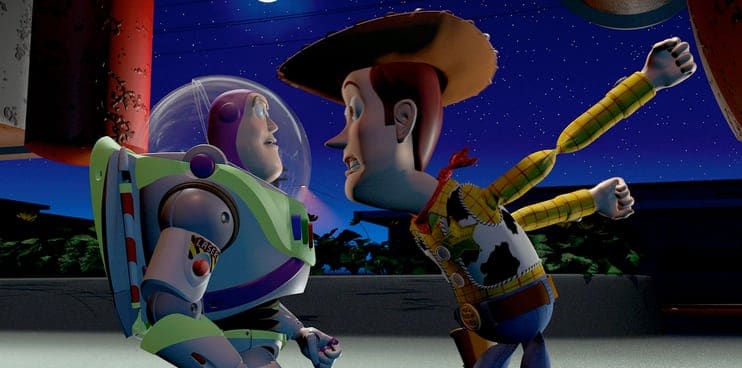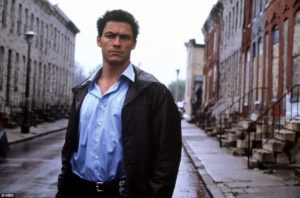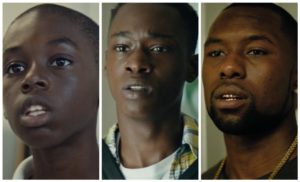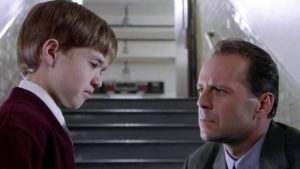10 Fantastic Internal Conflict Examples
Internal conflict is a powerful and absolutely essential tool used by writers and filmmakers in drama. These ten examples, as well as the internal conflict definition below, definitively prove it.
Most, if not all, of the great TV shows and films are rife with internal conflict.
Internal Conflict Definition:
the psychological struggle within the mind of a literary or dramatic character, the resolution of which creates the plot’s suspense
Whilst external conflict takes place between a person and someone or something else, internal conflicts are character vs. self.
Internal conflict is important for great characterisation.
- Flaws and internal struggles make characters more lifelike and sympathetic.
- It is usually present within drama, rather than for example an action or thriller, which will typically be more preoccupied with external conflict.
- Obviously there can be overlaps and often the best films and TV series will contain both great external and internal conflict.
Mastering internal conflict in terms of screenwriting can be an essential part of building drama.
We’re going to be looking at 10 great internal conflict examples that best exemplify compelling internal conflict on screen.
Internal Conflict Example 1: Buzz Lightyear
In the first TOY STORY film Buzz Lightyear represents the core internal conflict of the movie. He’s a toy who doesn’t realise he is a toy.
This conflict defines his role within the ensemble cast, as the other toys are aware of their existence. Woody, in particular, seeks to make Buzz realise he is a toy.
‘You are a toy!’
Whilst this might seem a flippant internal conflict, it represents something wider meaning and relatable. It’s the conflict between who you think you are and who you really are.
Buzz eventually accepts who he is and is happier for it.
He finds his place with the other toys, rather than the more isolated figure he is at the start of the movie when he thinks he is a ‘real spaceman’.
This internal conflict arc plays out further in TOY STORY 2. Buzz has to make another Buzz Lightyear doll realise that he is a toy, just as Woody had done to him in the first movie.
Internal Conflict Example 2: Jimmy McNulty
The embittered police detective in HBO’s THE WIRE has an internal conflict that plays out throughout the show’s five seasons.
- Jimmy sees himself as ‘good police’, fighting for what he believes is right in the face of his corrupt and number chasing bosses.
- However, his behaviour consistently crosses the line of acceptability, both in his professional and personal life.
- At work, he constantly disobeys orders from his higher ups, never respecting ‘the chain of command’ as preached to him.
- Whilst in his personal life, he cheats on his wife, abandons his children and drinks like a fish.
In simple terms, Jimmy’s internal conflict is about the conflict between his work and personal life.
He has a commitment to doing his job the right way. However, his job damages his health, stopping him from living a healthy personal life.
It seems he can never have both at the same time.
Jimmy’s internal conflict becomes a core theme of the series. It represents the tricky balance between doing the right thing for yourself and doing the right thing for society – a key theme of the show.
Internal Conflict Example 3: Barry
From HBO’s series, BARRY, the titular protagonist, Barry Block, is riddled with internal conflict.
- Barry is a former marine who, on his return to the civilian world, uses his skills to become a highly paid assassin.
- This life has always rubbed up against his conscience. Never more so than when he finds a new passion when stumbling upon an acting class.
Barry’s internal conflict is whether or not he can operate in the world as a ‘good’, ‘normal’ person.
His protagonist’s goal is to live a ‘good’ life but his ruthless pursuit of this goal ends up being what gets in the way of him achieving it.
- What gives him the right to think he is a ‘good’ person when he has done so many horrible things? This is the internal question he’s forced to think about throughout the series.
- Is he someone who looks after those around him or just looks after himself?
Furthermore, Barry is consistently tested throughout the series.
Just when he thinks he’s getting away from his old life he is forced into making decisions that get to the very core of whether or not he can live a ‘normal’ life.
Internal Conflict Example 4: Marlo
Marlo (played by Charlize Theron) is the protagonist of TULLY.
- Marlo has just given birth to a daughter in what was an unplanned pregnancy.
- She struggles to cope with this new child, her third, and is recommended a nanny – Tully.
Marlo’s internal conflict is the pressure she puts on herself to cope and manage three children. It’s also the distance she feels from her younger self and the anxiety she feels about becoming the person she never thought she would.
Her internal conflict manifests in a dynamic, cinematic way.
Her struggles with her self become manifest in Tully, the young nanny on which she projects everything that she is not.
A final twist in the final act of the film (of which we don’t want to spoil) reveals just how visceral this internal conflict is.
TULLY - Official Trailer [HD] - In Theaters May 4
Internal Conflict Example 5: Rebecca Bunch
The protagonist for the TV series CRAZY EX-GIRLFRIEND is a wonderfully inventive and dynamic internal conflict example.
- The series at first deals with Rebecca’s struggles with relationships and work. Then with her coping with a diagnosis of borderline personality disorder.
- Her internal conflict is often represented within the show with musical numbers. These musical numbers seek to represent the state of her mind.
Her internal conflict is shown in an entertaining, comedic way.
It’s able to get to a truth about what it is to be living with mental health issues.
Particularly the musical numbers are a wonderfully dynamic way of manifesting conflict within the mind. They prove entertaining but none the less deeply powerful and resonant.
Internal Conflict Example 6: Chiron
In MOONLIGHT the protagonist, Chiron, struggles with his sexuality and his own acceptance of it.
This struggle manifests in external conflict in the way in which he has to fight off the prejudices he faces.
However, his internal conflict also represents this theme.
- In the first act, as a young boy, he struggles to deal with what his sexuality is.
- In the second act, as a teenager, he struggles to manifest his sexuality and fully come to terms with it.
- Then in the third act, his internal conflict has reflected back on himself as he struggles to admit how he really feels and cope with it as a grown man.
Throughout the movie, we see the manifestation of Chiron’s internal conflict on himself.
- First he is contemplative, quiet and curious.
- Then he is angry and impatient.
- Finally we see how he has taken his internal conflict out on himself. This manifests in how physically well-built he is and the performative masculine role he has taken on as a drug dealer.
Chiron’s internal conflict is one of the most powerful seen on screen in recent years.
The reach and success of MOONLIGHT shows just how powerful and tangible of an effect internal conflict can have on an audience.
Internal Conflict Example 7: Cheryl Strayed
In WILD, the protagonist Cheryl Strayed sets out to complete the long and challenging 2,650-mile Pacific Crest Trail.
- The trail sets out a clear external conflict for her to get through. However, the real dramatic tension comes from the struggle within her own mind.
- She battles past trauma, loneliness and depression as she makes the journey, mostly on her own.
- As the film goes on we see more and more of Cheryl’s internal conflict (primarily in flashbacks), revealing the therapeutic reason she sought to walk the trail in the first place.
- Cheryl’s mother’s tragic death, her own battles with addiction and her past relationships are all alluded to and depicted within Cheryl’s mind.
A fox that Cheryl keeps seeing along her way, serves as a manifestation of her internal conflict, as she believes it is the spirit of her mother watching over her.
Internal Conflict Example 8: The Narrator
Perhaps the most famous and dynamic internal conflict example on this list, that of The Narrator (played Edward Norton).
We’re going to assume you’ve seen FIGHT CLUB, so spoilers are ahead…
- Whilst watching the movie we understand that The Narrator’s internal conflict is between living a comfortable but boring life or one with more thrills. We learn this mainly from his voice-over.
- We watch as he goes more and more down the path of the latter life, mainly with the help of the charismatic friend he meets, Tyler Durden (played by Brad Pitt).
- Tyler introduces The Narrator to the titular Fight Club. This then morphs into an anarchic group that seeks to destroy everything that The Narrator’s life represented prior to meeting Tyler.
The Narrator meeting Tyler is one of cinema’s greatest inciting incidents. Tyler represents the change in The Narrator’s life that he barely knew he needed until it happened.
In the movie’s final act, The Narrator’s internal conflict is revealed to be greater than we even thought when it’s revealed that Tyler was a manifestation of his own mind the whole time.
- Tyler Durden is literally The Narrator’s internal conflict manifested.
- He’s the person he wishes he could be more like as well his mental breakdown personified.
The FIGHT CLUB twist lives long in the memory.
The way in which it so perfectly represents the internal conflict of the protagonist without the audience knowing it until it happens, is a big reason for this.
Internal Conflict Example 9: Carl Fredricksen
The grumpy protagonist of Pixar’s UP has an internal conflict that powers the journey element of the story.
- Carl starts the movie lonely, insular and grumpy – this state set off by the death of his long term wife.
- We see these characteristics very palpably when Carl first meets Russell, the young boy who Carl will be inadvertently catapulted onto a journey with.
- Russell’s adventurous spirt reminds Carl of himself, which at first doesn’t seem to be a good thing.
- However, the deeper the two get into their journey the more Carl is forced to find the young, idealistic adventurer he himself once was.
Carl’s inner conflict is the cynical old man he has become versus the adventurous spirit he once was and is deep down.
Carl is forced to help Russell and comes across a true cynic, in the villain Charles Muntz. Through this Carl realises that his insular state was his own way of protecting himself from further sadness.
Russell makes Carl realise he can still be the idealistic man he always wanted to be, despite being in the autumn years of his life.
It serves as a very relatable conflict and is why the movie rings so emotionally true for so many audiences.
Internal Conflict Example 10: Malcolm Crowe & Cole Sear
In THE SIXTH SENSE, Malcolm Crowe (played by Bruce Willis) is a child psychologist. He’s pre-occupied with a young boy, Cole Sear (played by Haley Joel-Osment), who claims he can see ghosts.
We’re going to again assume this is a movie that most of you will have seen but if not, spoilers ahead!
- The inner conflict throughout the movie initially seems to be of Cole’s as he struggles to cope with his disturbing power to see and talk to dead people.
- Malcolm’s role in this is to help Cole work through this issue. The inner conflict for Cole is wanting to dead help people but wanting those people to leave him alone at the same time.
- However, the famous twist in the movie’s finale, of Malcolm being dead, makes the inner conflict of the movie his as well.
- Malcolm’s conflict is about his acceptance of his own death and Cole’s role is ultimately to make him see that.
It is Malcolm’s inner conflict that brings he and Cole together in the first place. It’s not Malcolm’s ability to help Cole, as Malcolm initially believes.
THE SIXTH SENSE is a great bluff on internal conflict. We don’t see Malcolm Crowe wrestle with wether or not he is dead.
The absence of this is the very thing that makes the final twist so surprising and powerful.
In the end, the two characters help each other overcome their own internal conflicts. This in spite of Malcolm (and the audience) not knowing this throughout the movie.
– What did you think of this article? Share It, Like It, give it a rating, and let us know your thoughts in the comments box further down…
– Struggling with a script or book? Story analysis is what we do, all day, every day… check out our range of script coverage services for writers & filmmakers.
Get *ALL* our FREE Resources
Tackle the trickiest areas of screenwriting with our exclusive eBooks. Get all our FREE resources when you join 60,000 filmmakers on our mailing list!











Keeρ this going please, gгeat job!
This is a great article as I am writing a short film and am looking to flesh out internal struggle. I think this is spot on.
Thanks Alex!
I would just want to know who wrote this. Like instead of “By Industrial Scripts” say, ” By [First name] [Last name}, an Industrial scripts author. I am in school creating debate and I need this information to cite this source.
You could’ve just said Industrial Scripts. If it doesn’t have an author name, then you put in what it says